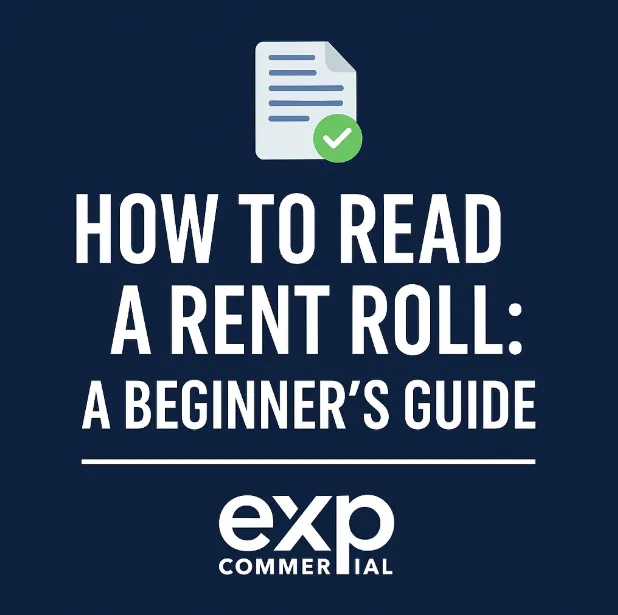
🧾 How to Read a Rent Roll Like a Pro 📊 | CRE Investor’s Beginner Guide
🧾 How to Read a Rent Roll Like a Pro 📊 | CRE Investor’s Beginner Guide
📑 Rent Roll Basics 🏢 | The Ultimate Beginner’s Guide for CRE Success
🧾 How to Read a Rent Roll: A Beginner’s Guide
A rent roll is one of the most important documents in commercial real estate. Whether you’re a new investor evaluating a deal or a business owner leasing space, understanding how to read a rent roll can make or break your decision.
In this guide, we’ll walk through what a rent roll is, why it’s important, and how to analyze it like a pro.
What Is a Rent Roll?
A rent roll is a detailed record of rental income for a property, typically listing each tenant, their lease terms, rental rate, and payment status. It serves as both a snapshot of income and a management tool for property owners and lenders.
Why Rent Rolls Matter
· For Investors: Shows the property’s income potential and stability.
· For Lenders: Used to verify income during financing.
· For Property Managers: Helps track occupancy and lease expirations.
A rent roll can reveal red flags such as frequent tenant turnover, below-market rents, or high vacancy rates.
Key Elements of a Rent Roll
While formats vary, most rent rolls include:
1. Tenant Name – The individual or company leasing the space.
2. Unit/Suite Number – Identifies the location within the property.
3. Lease Start & End Dates – Shows term length and renewal timing.
4. Monthly Rent – The agreed rental payment.
5. CAM/NNN Charges – Common area maintenance or triple-net expenses paid by the tenant.
6. Deposit Held – Security deposit amount.
7. Payment Status – Whether rent is current or delinquent.
How to Analyze a Rent Roll
1. Compare to Market Rents – Are tenants paying market rate, above, or below?
2. Check Lease Expirations – Many leases ending in the same month can be a vacancy risk.
3. Review Tenant Mix – A diverse tenant base reduces risk in downturns.
4. Verify Occupancy Rate – Look for consistent, high occupancy over time.
5. Match to Income Statements – Ensure reported rent matches the property’s financials.
Common Red Flags in a Rent Roll
· Multiple delinquent tenants
· Short-term leases with no renewal options
· Heavy reliance on a single anchor tenant
· Significant gap between actual and market rent
Pro Tip for Beginners
When buying a commercial property, always request the rent roll and review it alongside the profit & loss statement. This ensures the property’s income claims are accurate.
Final Takeaway
Understanding how to read a rent roll isn’t just a technical skill—it’s a profit-protecting habit. By mastering this document, you’ll make more informed decisions, negotiate stronger deals, and avoid costly surprises.
https://www.houstonrealestatebrokerage.com/
https://www.houstonrealestatebrokerage.com/houston-cre-navigator
https://www.commercialexchange.com/agent/653bf5593e3a3e1dcec275a6
http://expressoffers.com/[email protected]
https://app.bullpenre.com/profile/1742476177701x437444415125976000
https://author.billrapponline.com/
https://www.amazon.com/dp/B0F32Z5BH2
https://veed.cello.so/FOmzTty6oi9
© 2023-2024 Bill Rapp, Broker Associate, eXp Commercial Viking Enterprise Team
